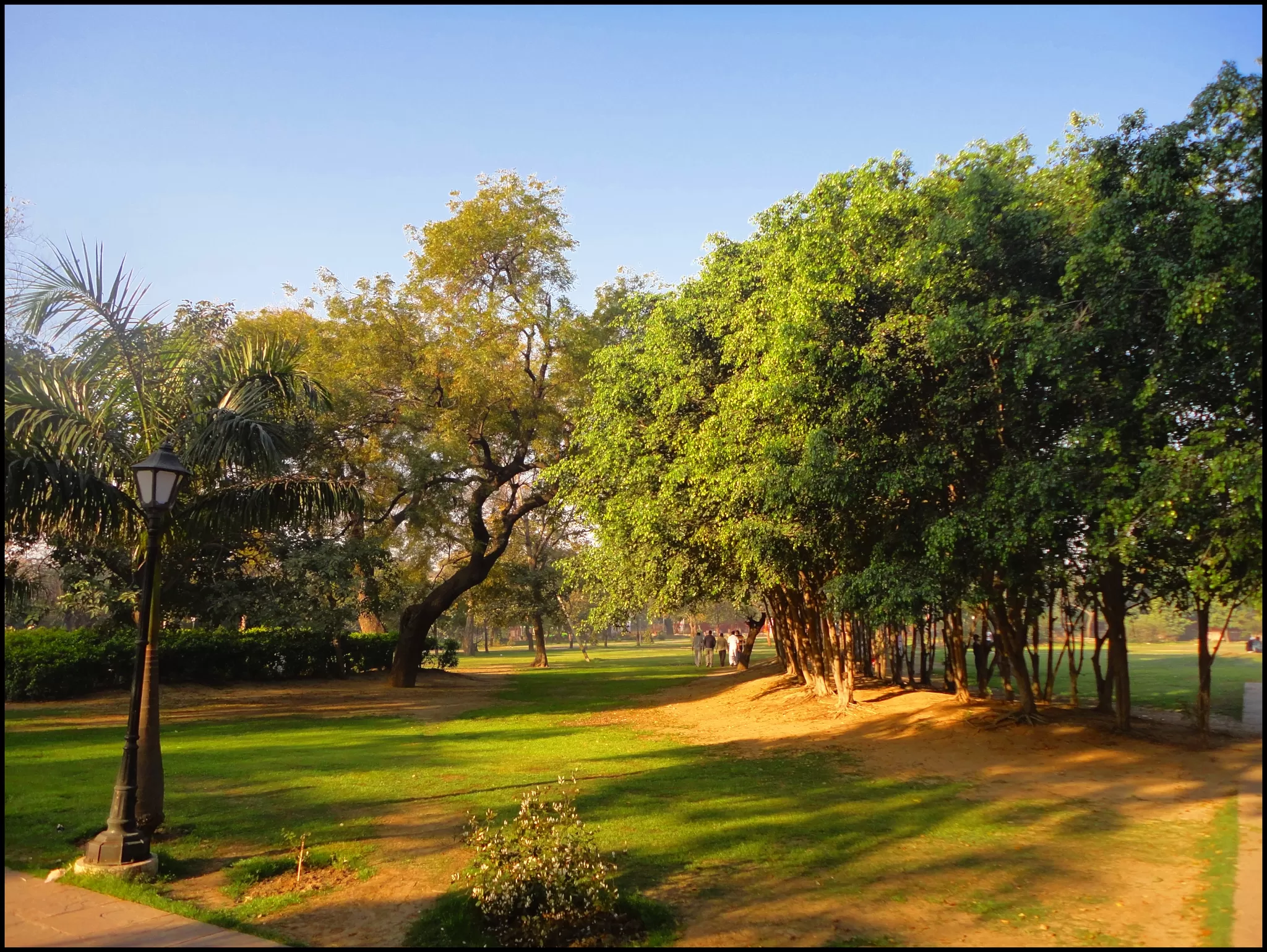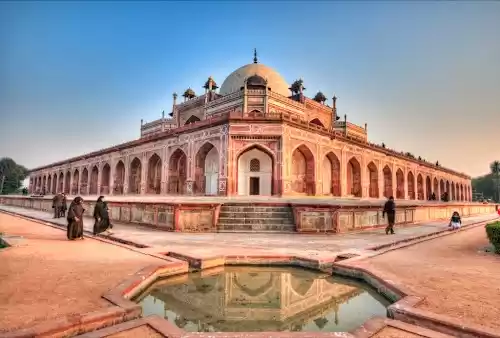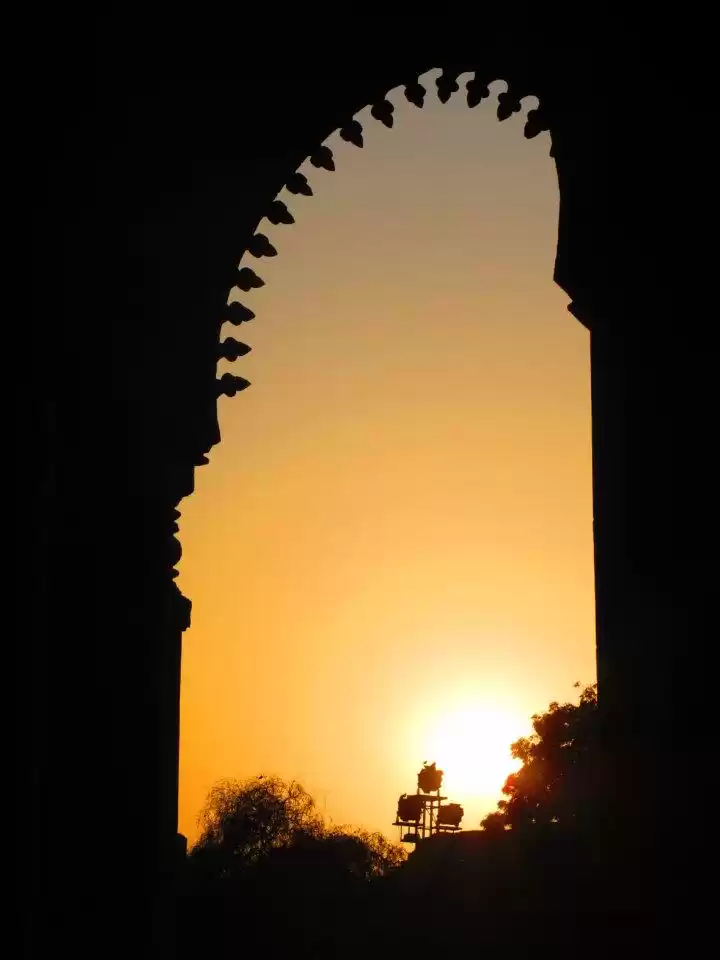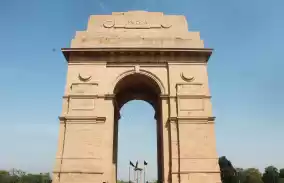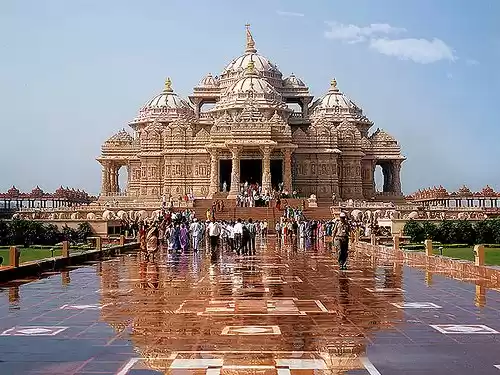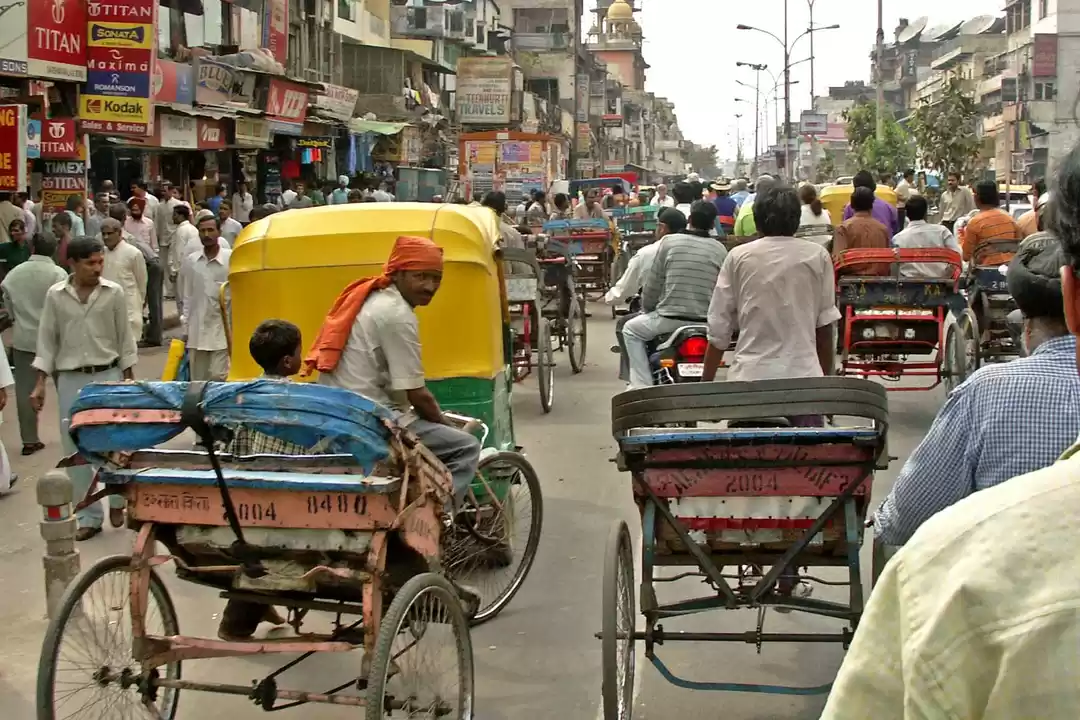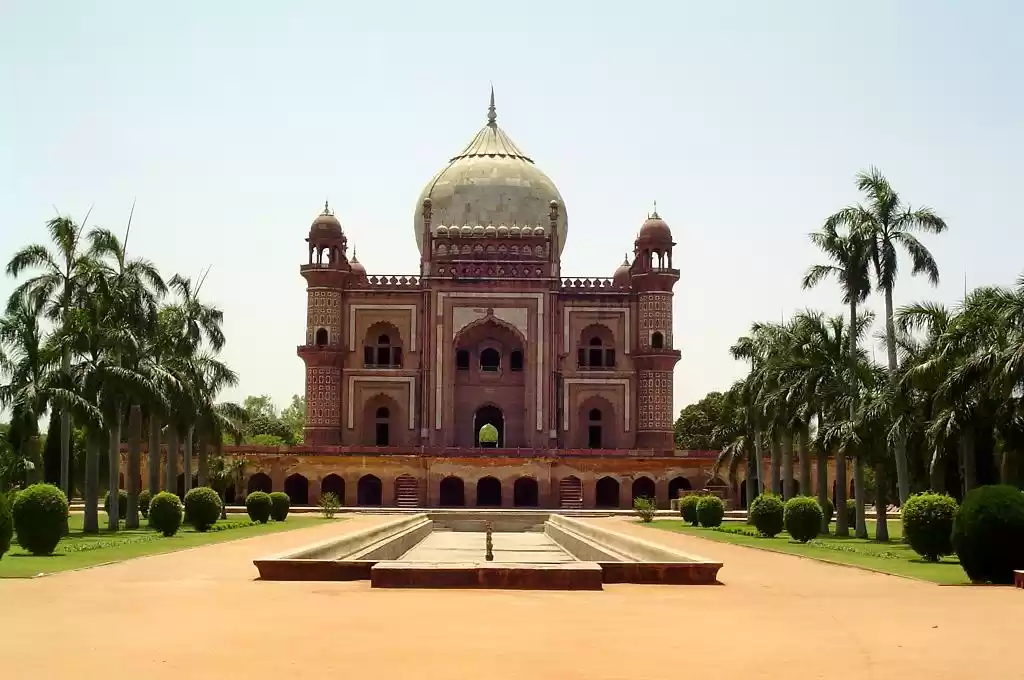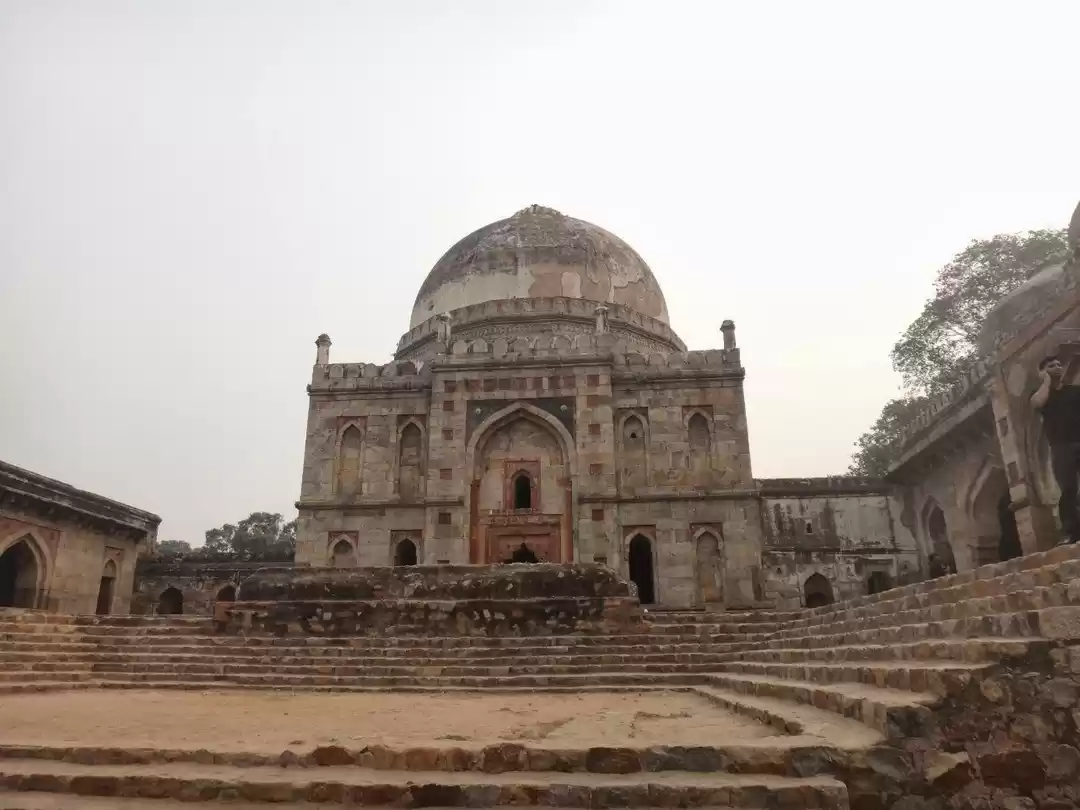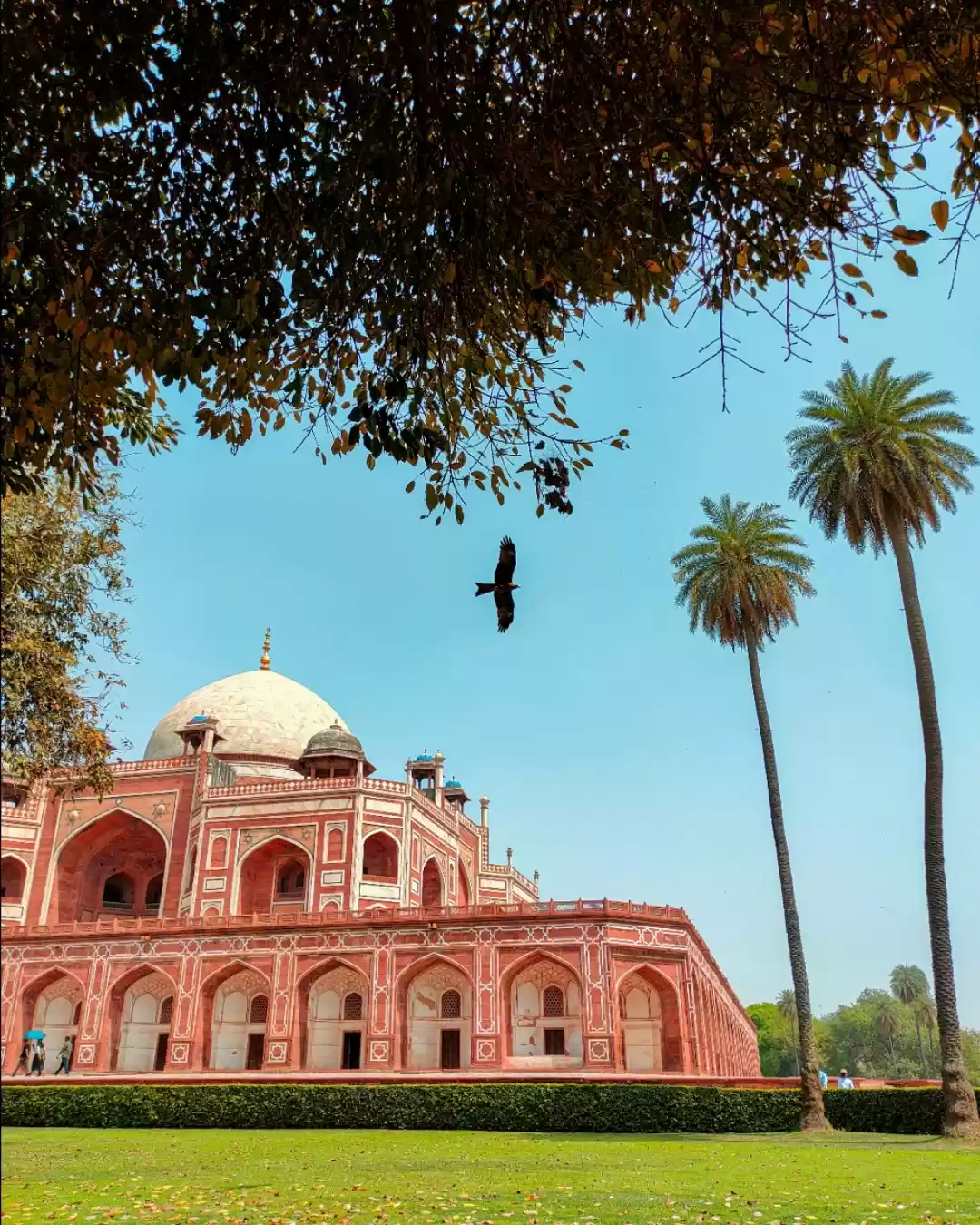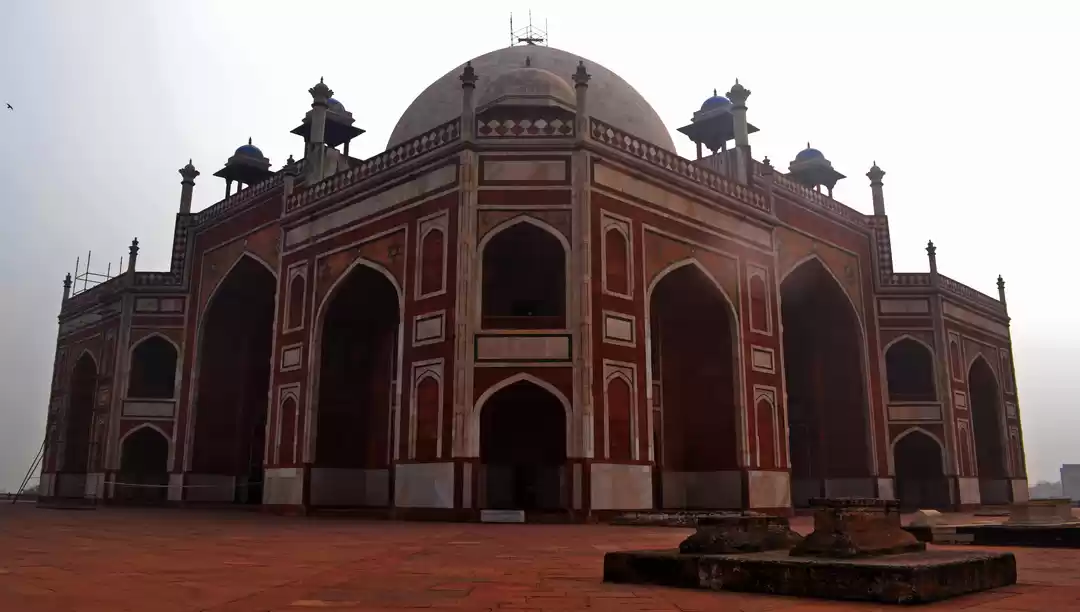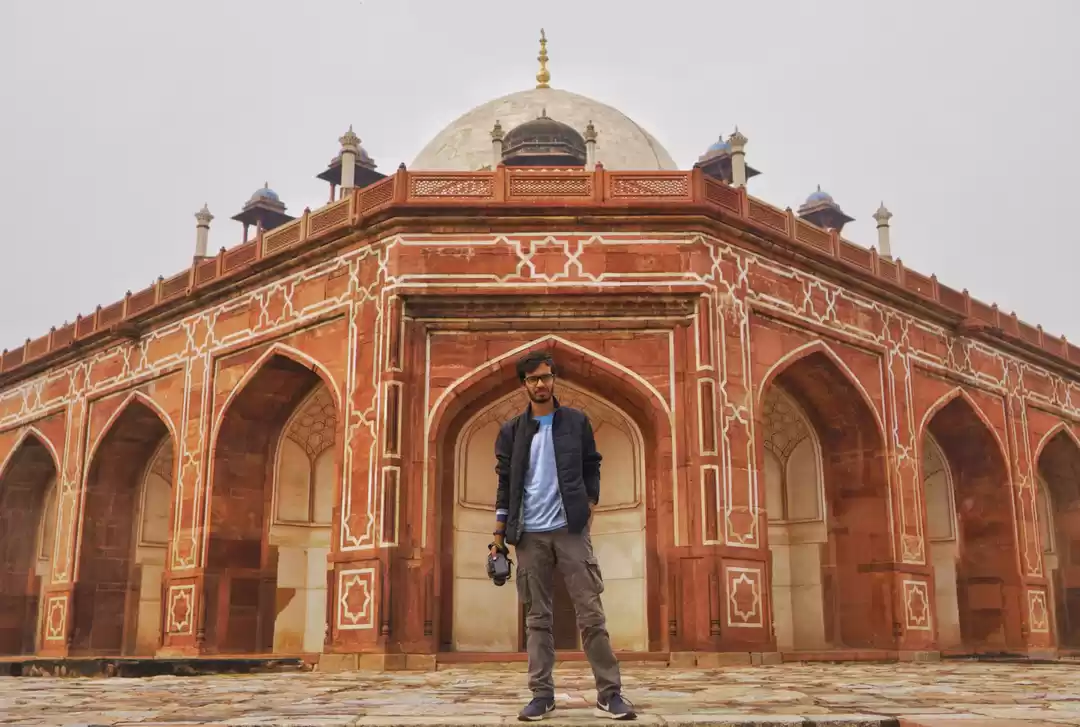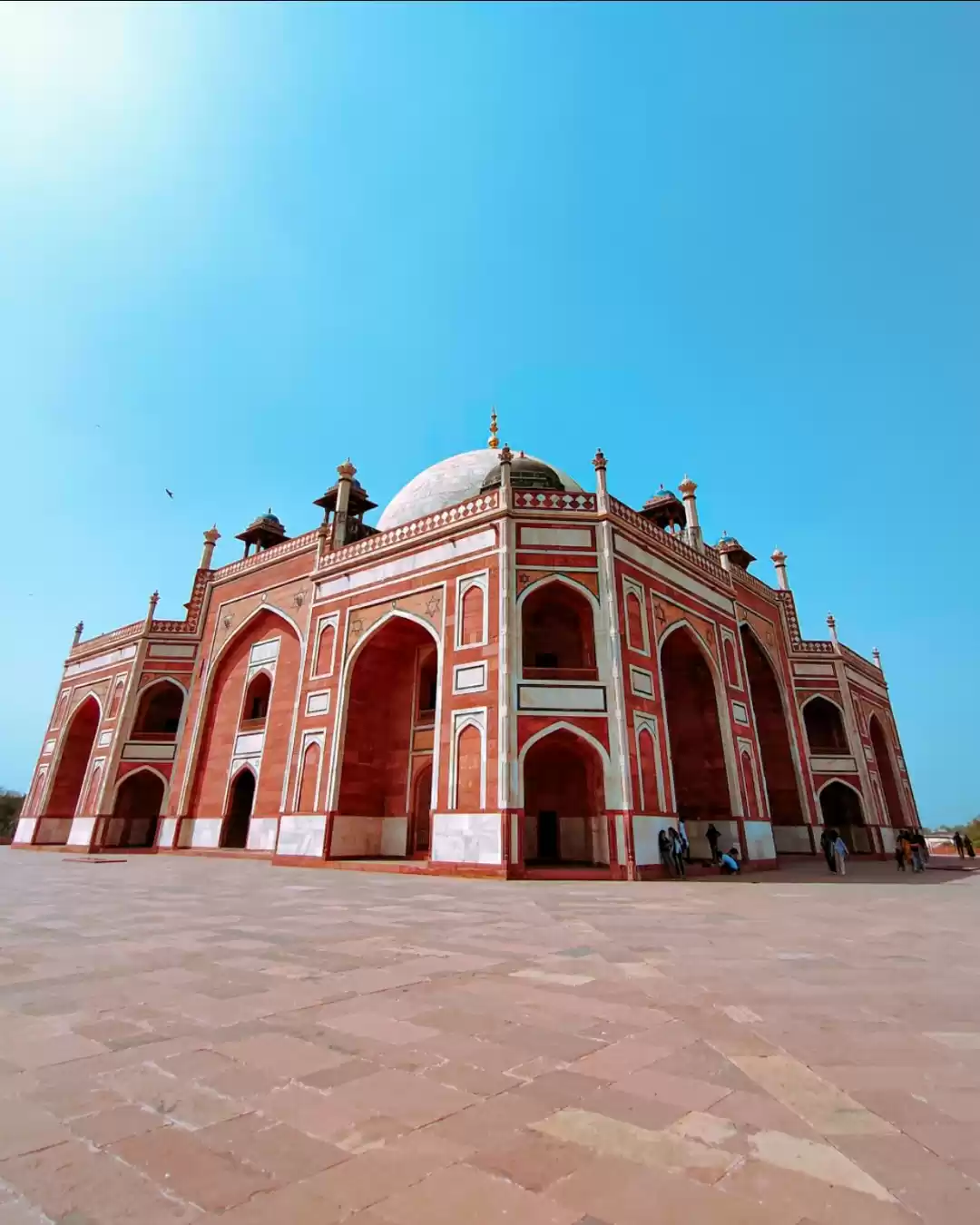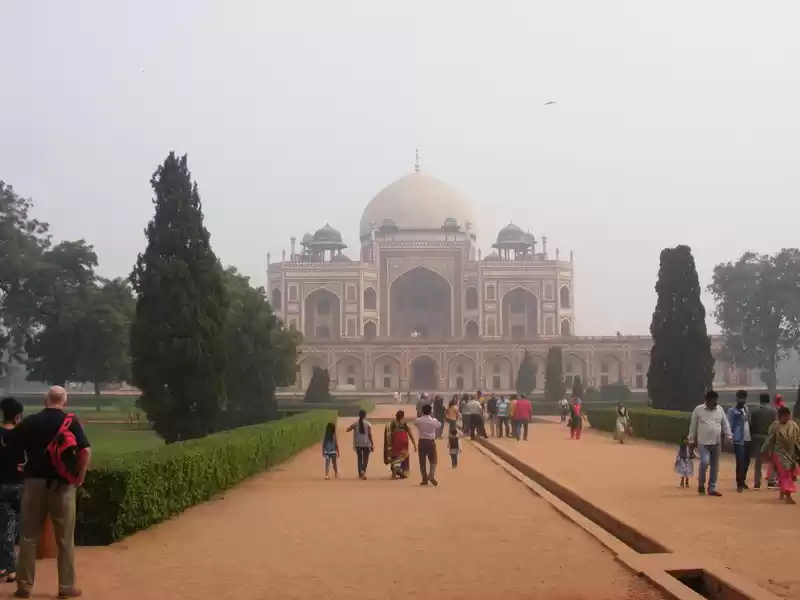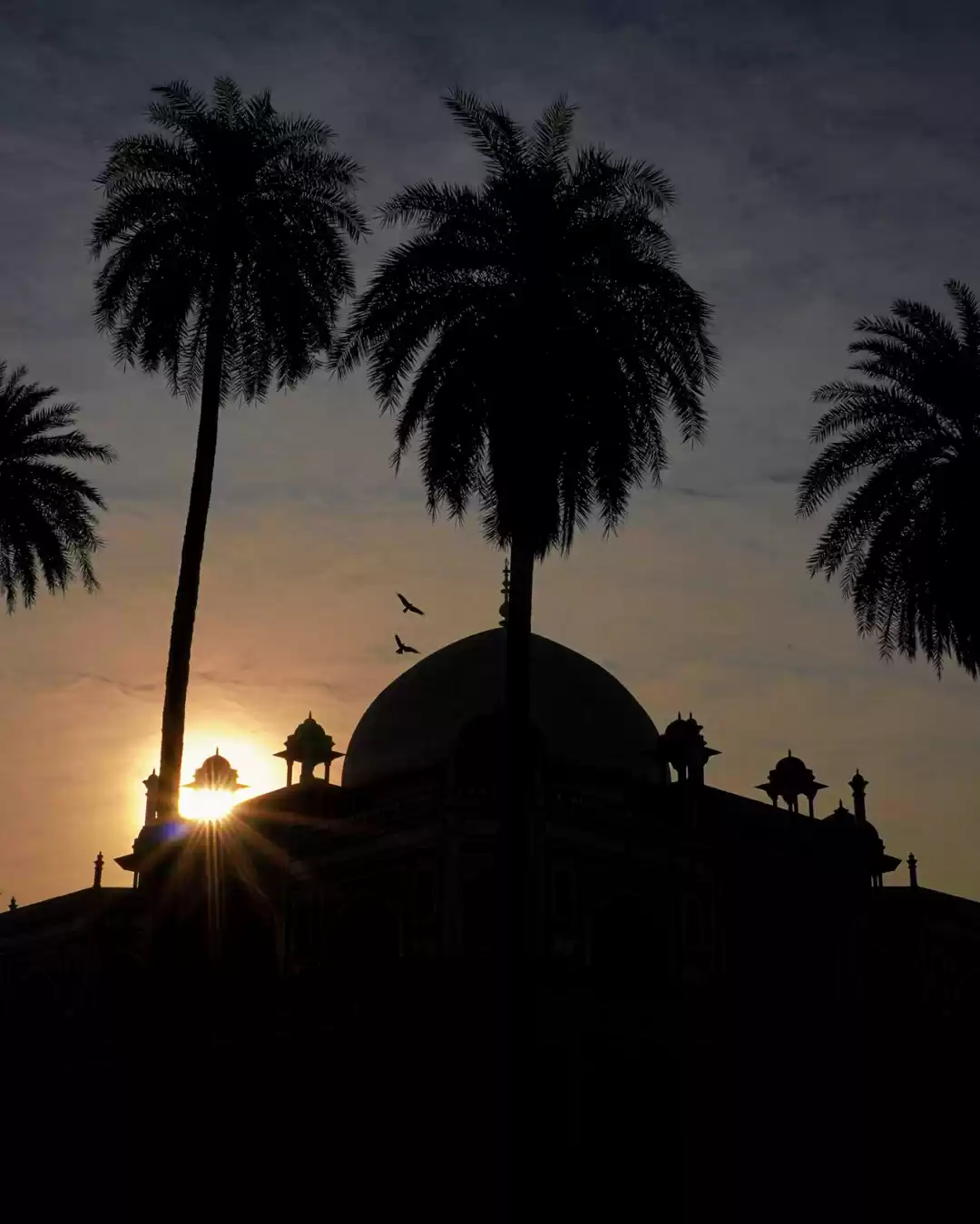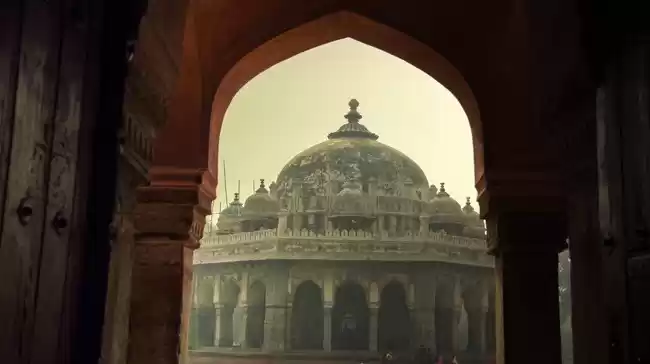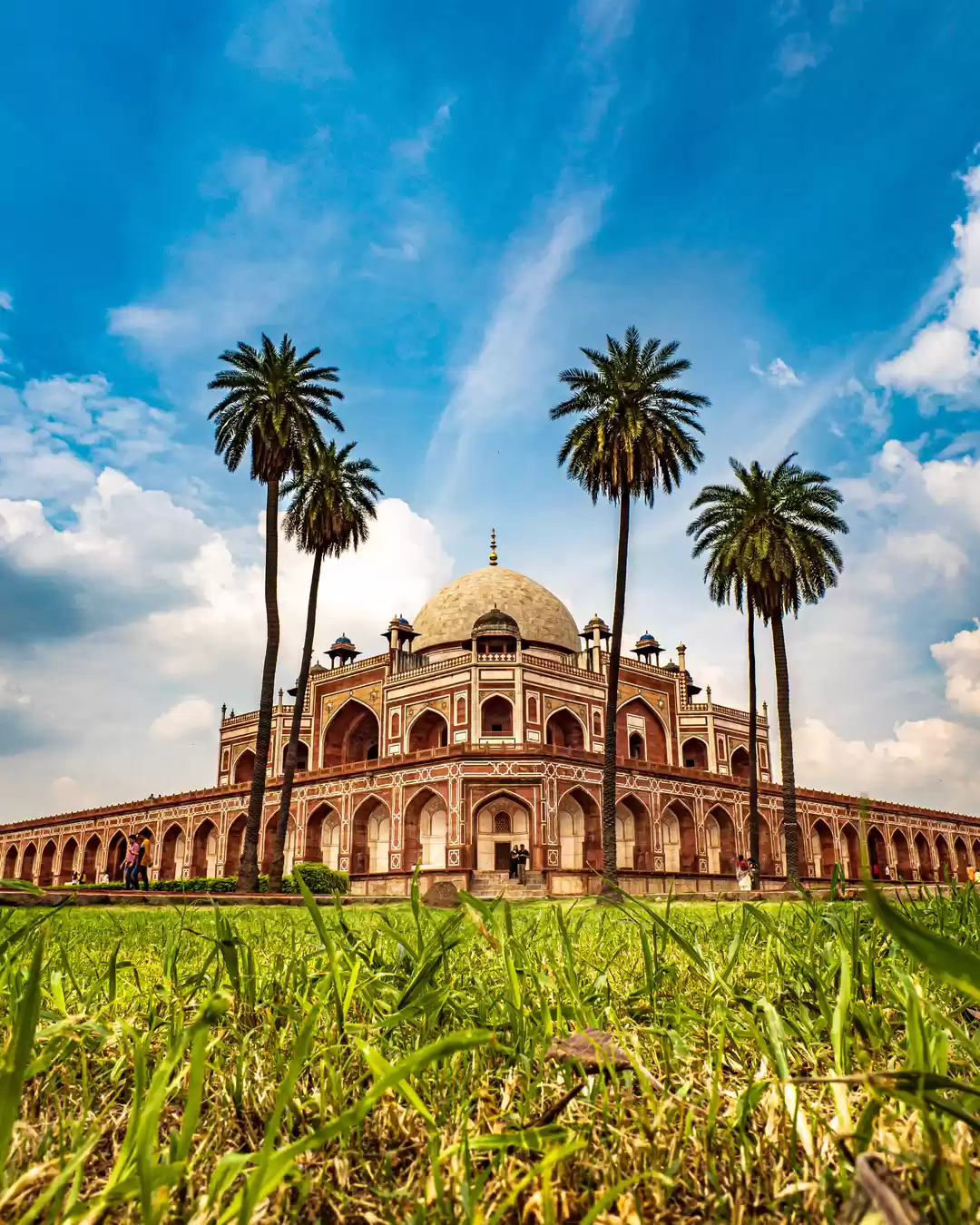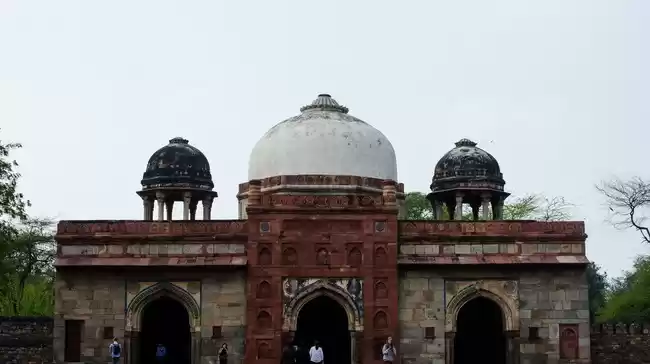Humayun’s Tomb, a UNESCO World Heritage Site is one of the most stunning monuments in Agra and is the first garden tomb in India, the first structure to use red sandstone on a large scale. The best part of this tomb is the Char Bagh surrounding the tomb, a Persian-style garden divided into four parts by walkways or flowing water.
Humayun's Tomb is famous for its historical significance, stunning architecture, and serene gardens, making it a must-visit attraction for anyone exploring Delhi's rich cultural heritage.
History & Significance Of Humayun’s Tomb

- Humayun’s Tomb, dating back to the 16th century, was commissioned by Haji Begum, also known as Bega Begum or Malika-e-Jahan (Queen of the World), the chief consort of Humayun and the mother of Akbar.
- Haji Begum, a Persian princess who married Humayun in 1530, played a crucial role in restoring Humayun’s power in India after his exile to Iran following his defeat to Sher Shah Suri.
- Deeply devoted to Humayun, Haji Begum decided to build a magnificent tomb for him as a symbol of her love and respect.
- She enlisted the Persian architect Mirak Mirza Ghiyas to design and construct the tomb in 1565, with construction taking 14 years to complete and costing 1.5 million rupees at that time.
- Humayun’s Tomb is a testament to the fusion of Persian, Turkish, and Indian cultures, marking a significant milestone in the development of Mughal architecture.
- It signifies the transition from the Timurid style of Humayun’s father Babur to the Indo-Islamic style of his son Akbar.
- Humayun’s Tomb is renowned for being the first garden tomb in India, which inspired many other tombs and monuments in the country, including the iconic Taj Mahal and Safdarjung’s Tomb.
Customize your Delhi Tour Package now!
Architecture Of Humayun’s Tomb

- Humayun’s Tomb is a masterpiece of Mughal architecture, featuring an octagonal shape, double domes, arched facades, lattice work, pietra dura floors, and attics.
- Built on a raised platform measuring 120 meters by 120 meters.
- The platform has four arched entrances on each side leading to the main chamber housing Humayun’s cenotaph, made of white marble with Quranic inscriptions.
- The main chamber also contains smaller chambers with graves of other royals and nobles.
- Covered by a double dome rising to 42 meters, with an outer dome of white marble and a brass finial, and an inner dome of red sandstone with an opening for natural light.
Char Bagh Garden

- Surrounds the tomb, measuring 300 meters by 300 meters.
- Divided into four quadrants by two intersecting water channels with fountains and pools.
- Features pavilions, tombs, mosques, and gateways, enhancing its beauty.
- Designed to symbolize paradise as described in the Quran.
Enclosure Wall and Gates:
- The tomb and garden are enclosed by a high wall with four gates on each side.
- The main gate, located on the south side, is adorned with marble and red sandstone.
- The gate includes a small chamber serving as a museum and library.
Must Read: Know about Humayun's Tomb: Pride of the Mughals
Timings & Entry Fee Of Humayun’s Tomb

Opening Hours:
Humayun’s Tomb is open to the public every day from sunrise to sunset.
Timings may vary based on the season and weather conditions.
Entry Fee:
Indian visitors: 40 rupees.
Foreign visitors: 600 rupees.
Children below 15 years: Free entry.
Entry fee includes access to the museum and library inside the main gate.
Photography and Video Fees:
Photography fee: 25 rupees.
Video filming fee: 300 rupees.
Ticket Purchase:
Tickets can be purchased at the ticket counter near the main gate.
Tickets are also available for purchase online through the official website of the Archaeological Survey of India (ASI).
Dining Options Near Humayun's Tomb
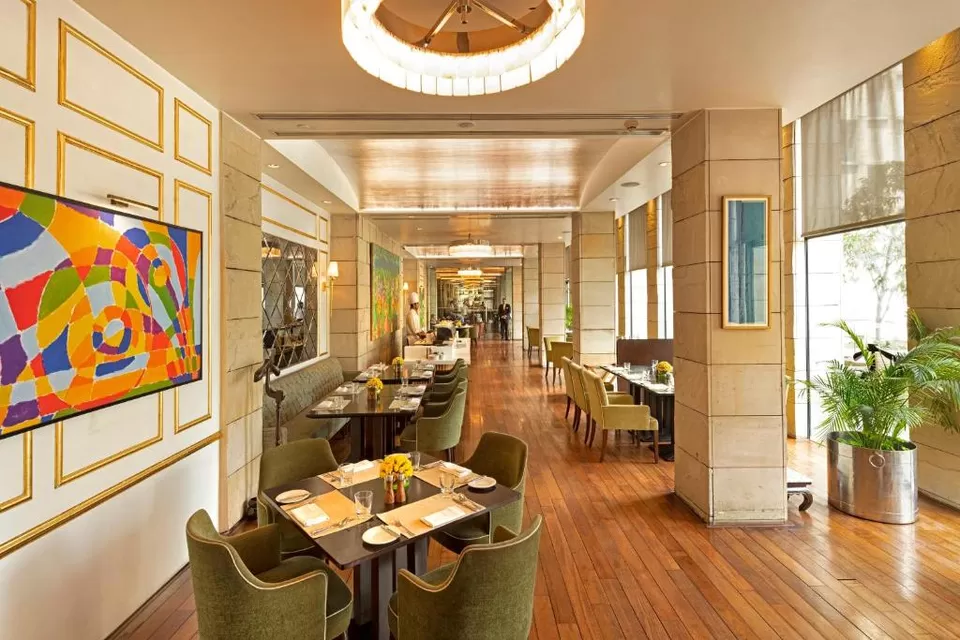
Lodi - The Garden Restaurant: Located near Lodhi Garden, this restaurant offers a peaceful ambiance and a menu featuring Indian and continental dishes. Approximate cost for two: 1500-2000 rupees.
The Lodhi: A luxury hotel near Humayun's Tomb, The Lodhi offers several dining options, including Indian, Asian, and Mediterranean cuisine. Approximate cost for two: 3000-4000 rupees.
Naivedyam: A popular South Indian restaurant located in Sunder Nagar, Naivedyam offers a range of authentic South Indian dishes. Approximate cost for two: 600-800 rupees.
Café Turtle: Located in Khan Market, Café Turtle offers a cozy atmosphere and a menu featuring organic and vegetarian dishes, along with a variety of beverages. Approximate cost for two: 800-1000 rupees.
Khan Chacha: A well-known eatery in Khan Market, Khan Chacha is famous for its rolls and kebabs. Approximate cost for two: 400-600 rupees.
Must Read:Did you know the Humayun's Tomb is the inspiration behind iconic Taj Mahal?
Nearby Attractions From Humayun's Tomb
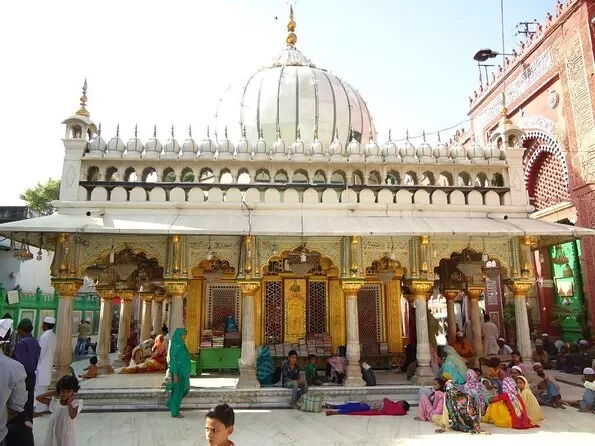
Humayun’s Tomb is not only a monument but also a gateway to explore other attractions in Delhi that are nearby or within a short distance.
Nizamuddin Dargah: This is a shrine of the famous Sufi saint Hazrat Nizamuddin Auliya, who was a contemporary of Humayun and Akbar. The dargah is a place of worship and devotion for Muslims and is also a place of music and poetry, where qawwali singers perform every evening.
Purana Qila: This is an old fort that was built by Humayun before he lost his throne to Sher Shah Suri. The fort has three gates, namely Bara Darwaza Humayun Darwaza, and Talaqi Darwaza. The fort also has a mosque, a stepwell, a museum, and a lake.
India Gate: This is a war memorial that was built in the 20th century to honor the Indian soldiers who died in World War I and the Afghan Wars. The gate is a 42-meter high arch that has the names of more than 13,000 soldiers inscribed on it.
National Zoological Park: This is a zoo that was established in 1959 and covers an area of 176 acres. The zoo has more than 1,300 animals of different species, such as tigers, lions, elephants, rhinos, bears, deer, monkeys, birds, reptiles, etc. The zoo also has a library, a museum, a cafeteria, and a souvenir shop.
Lodhi Garden: Located a short distance from Humayun's Tomb, Lodhi Garden is a peaceful oasis in the heart of Delhi. The garden is home to several historical monuments from the Lodhi and Sayyid dynasties, including tombs, mosques, and bridges.
Best Time to Visit Humayun's Tomb

Winter months from October to March are ideal.
Pleasant weather with temperatures ranging from 5°C to 25°C.
Comfortable for sightseeing.
Tourist season in Delhi, with more activities and events.
How To Reach Humayun's Tomb

Easily accessible by various modes of transport such as air, rail, bus, metro, taxi, and auto rickshaw.
From Indira Gandhi International Airport
Distance: 20 kilometers, 40 minutes by car/taxi, Fare: 400-500 rupees.
Alternatives: Airport Express Metro to New Delhi Railway Station, then taxi/auto rickshaw. Metro fare: 60 rupees, taxi/auto rickshaw fare: about 100 rupees.
From New Delhi Railway Station
Distance: 8 kilometers, 20 minutes by car/taxi, Fare: 100-150 rupees.
Alternatives: Yellow Line Metro to JLN Stadium Metro Station, then taxi/auto rickshaw. Metro fare: 20 rupees, taxi/auto rickshaw fare: about 50 rupees.
From ISBT Kashmere Gate
Distance: 12 kilometers, 30 minutes by car/taxi, Fare: 150-200 rupees.
Alternatives: Red Line Metro to Rajiv Chowk Metro Station, then change to Yellow Line Metro to JLN Stadium Metro Station, then taxi/auto rickshaw. Metro fare: 30 rupees, taxi/auto rickshaw fare: about 50 rupees.
From India Gate
Distance: 5 kilometers, 15 minutes by car/taxi, Fare: 50-100 rupees.
Alternatives: Bus or auto rickshaw to Nizamuddin Bridge, then walk for about 10 minutes. Bus fare: 10 rupees, auto rickshaw fare: about 30 rupees.







